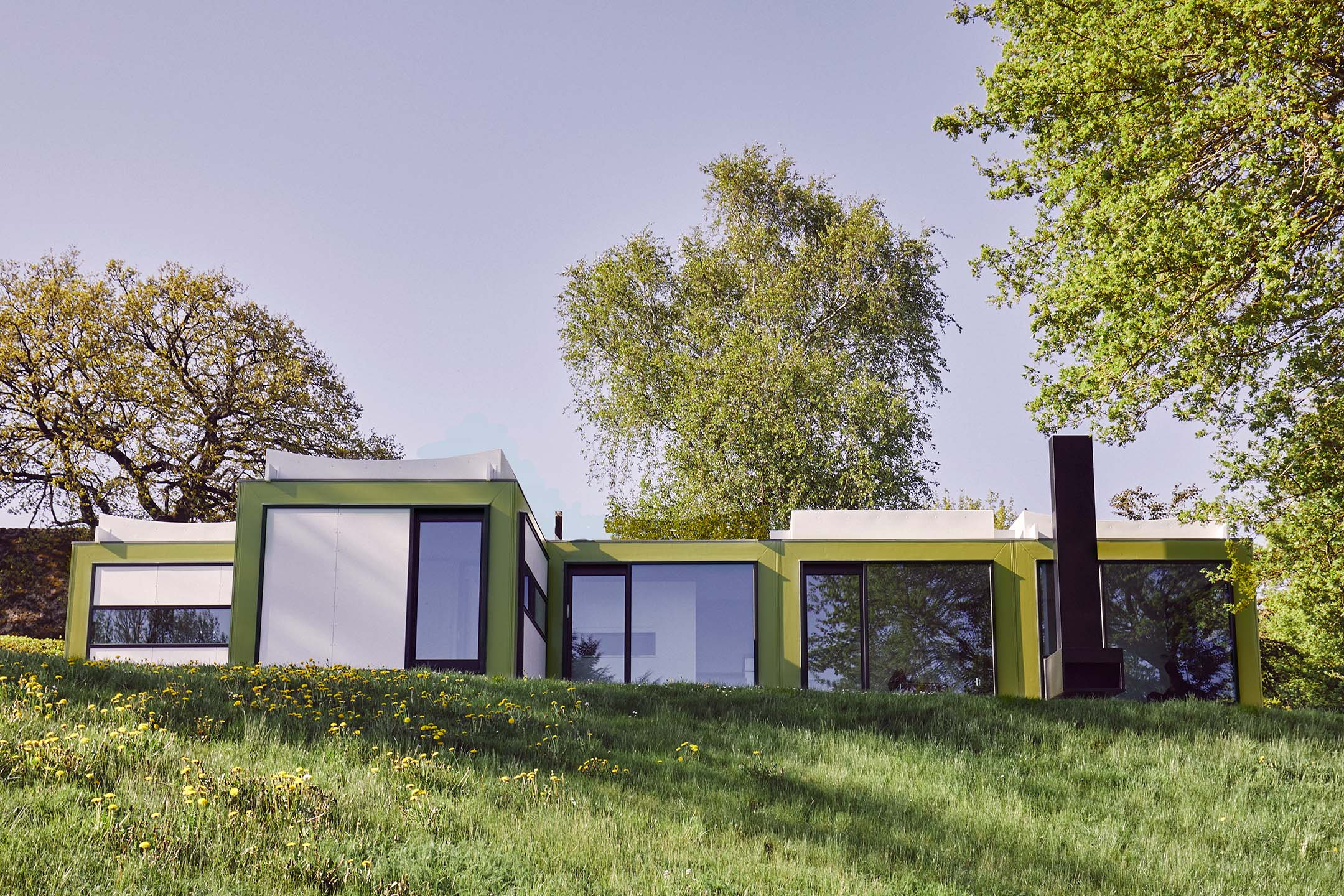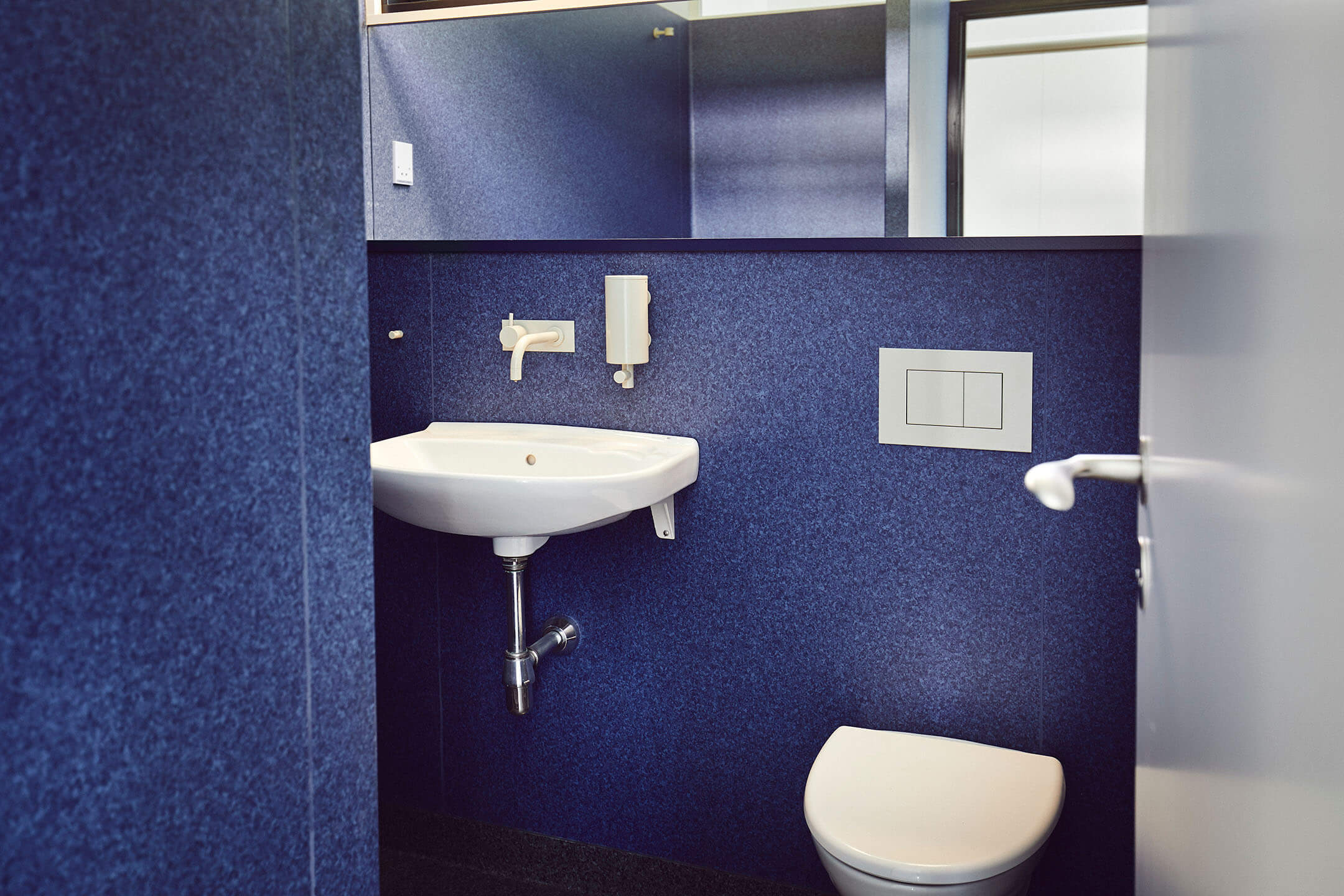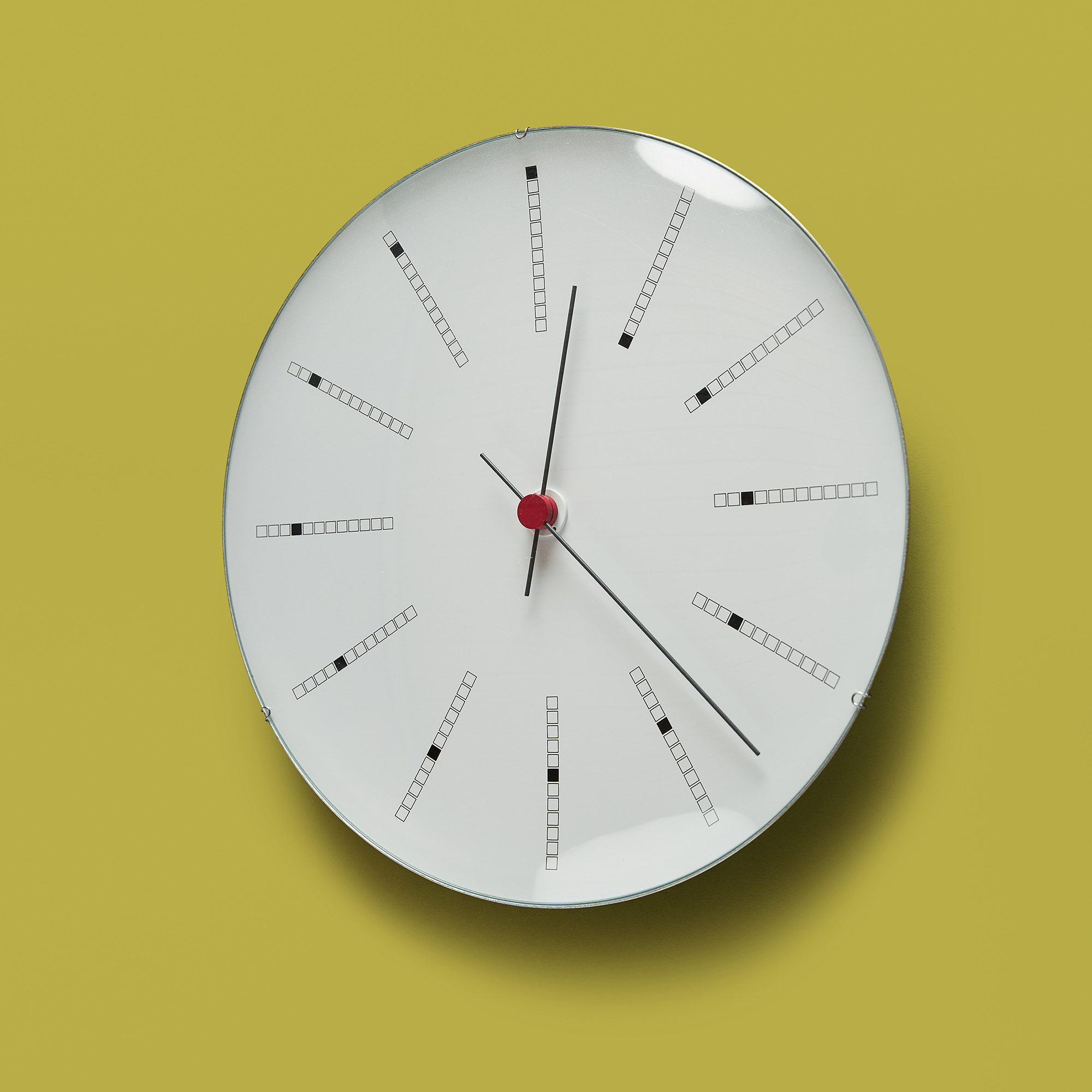VOLA
PART OF THE TOTAL DESIGN FORNational Bank of Denmark
Using the circle and the cylinder as the basic shapes, Arne Jacobsen created the iconic VOLA series, which made design history overnight.
VOLA is a series of taps and accessories based on Arne Jacobsen’s ambition of creating simple, flexible designs that can be adapted to the user’s needs. The design is based on a modular system with basic components that can be combined in a variety of ways to match individual settings and purposes. VOLA was first installed at the National Bank of Denmark, one of Arne Jacobsen’s principal works, which opened in 1971.

As an innovative feature in 1969, VOLA could be fitted into the wall, so that only the tap itself and the grips were visible. This allowed Arne Jacobsen to develop the iconic expression of the design. During the 1960s, Arne Jacobsen’s design expression developed, and the free curves characterizing his successful furniture designs from the 1950s were replaced by designs based on modules, repetition and elementary basic shapes. Using the circle and the cylinder as the basic shapes, Arne Jacobsen created the iconic VOLA series, which made design history overnight.
The idea for the VOLA series arose when the director of I.P. Lunds Eftf. (now VOLA), Verner Overgaard, approached Arne Jacobsen with a proposal for a mixer tap where all the pipes are hidden inside the wall, and only the grips and the spout are exposed. The desire to eliminate all superfluous features is a consistent characteristic of Arne Jacobsen’s design practice, and this idea for a new type of mixer tap undoubtedly appealed to the architect, who had recently won the design competition for Denmark’s new national bank building.


As an innovative feature in 1969, VOLA could be fitted into the wall, so that only the tap itself and the grips were visible.
The original elements in the series included a grip, a spout and a cover plate for a wall-mounted tap and the two famous table-mounted taps KV1 and HV1. The initial colour options were grey and orange, but over the course of the 1970s, new colours were added. The series was also expanded with new products, all designed to match standard tile dimensions, which added to its utility.
After his highly successful 1950s designs, including the Swan and Egg chairs, Arne Jacobsen continued to renew his approach and expression. During the 1960s, his interest in new production methods and the inherent possibilities of prefabrication inspired flexible design systems and an expression based on geometry and repetition. This is apparent in VOLA as well as in several of Arne Jacobsen’s late furniture designs comprised of basic shapes such as the cylinder, circle and the cube.

In 1970, Arne Jacobsen applied the same modular principle in his design of a modular house called Kubeflex based on standardized cubes that can be combined to form custom-built homes. Arne Jacobsen’s appreciation of the potential of these developments reflects his uniquely forward-looking perspective. Sadly, he passed away in 1971 before the new design expression achieved its commercial breakthrough.
Sources: Arne Jacobsen Design Archives. / Arne Jacobsen’s scrapbooks. The Royal Library – Danish Art Library. / Danmarks Nationalbank: The Danmarks Nationalbank building (2016). Copenhagen: Danmarks Nationalbank / Stenum Poulsen, K., Skaarup Larsen, A., & Staunsager, S. (2020). Arne Jacobsen – Designing Denmark. Kolding: Trapholt. / Thau, C., & Vindum, K. (1998). Arne Jacobsen. Copenhagen: Danish Architectural Press. / Tøjner, P. E., & Vindum, K. (1994). Arne Jacobsen: arkitekt & designer. Copenhagen: Dansk Design Center.



